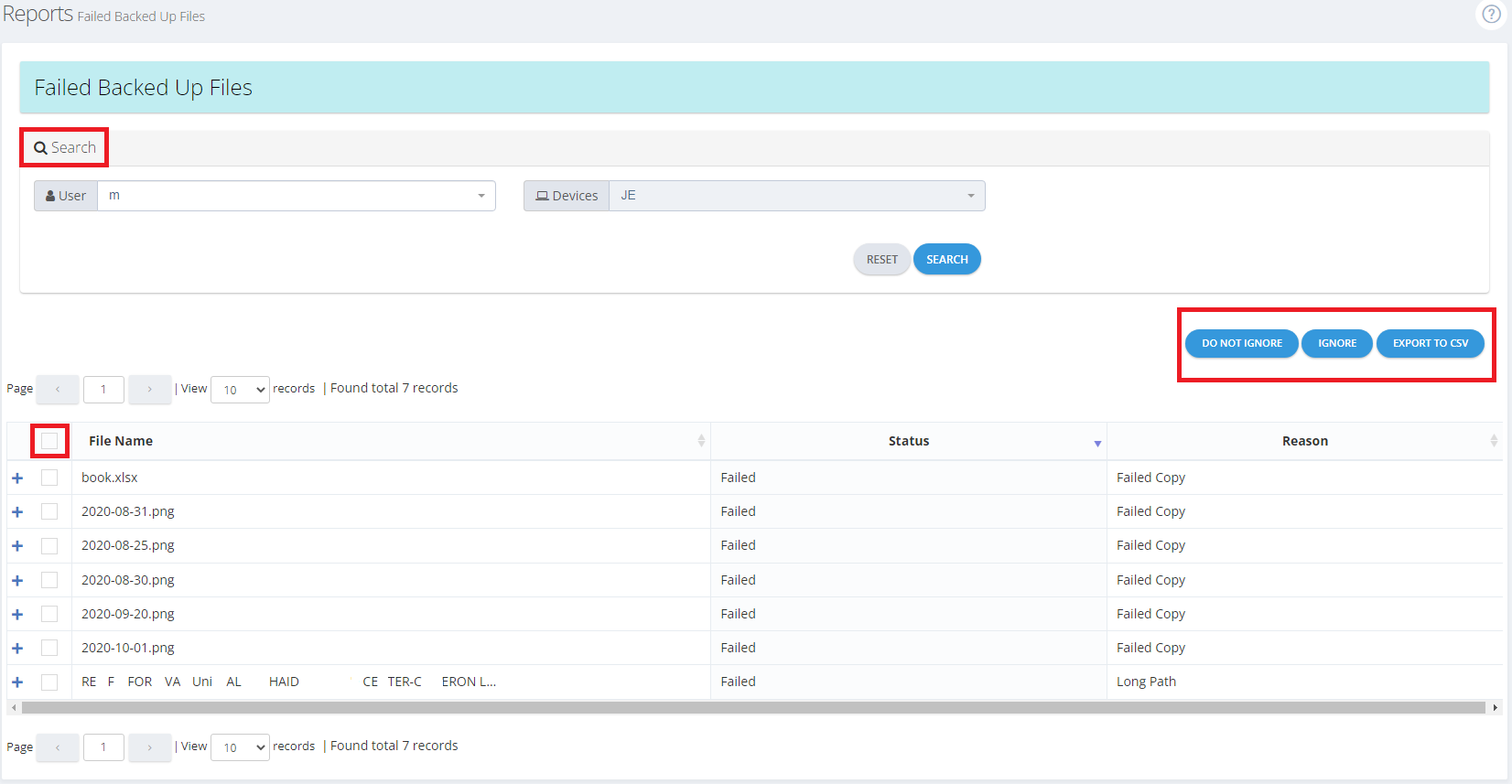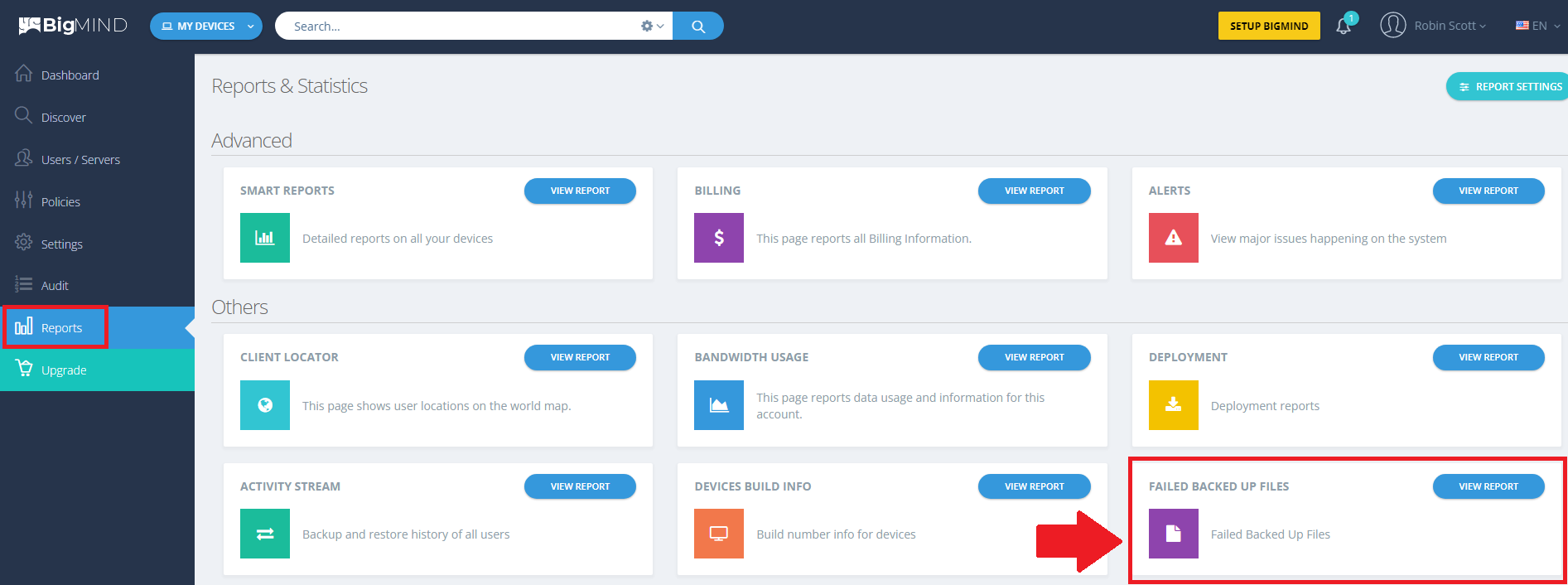Introduction
Occasionally, files may not back up to the Cloud successfully due to various issues. Understanding how to identify and address these failed backups is crucial for maintaining the integrity of your data. This guide will help you navigate the BigMIND “Failed Backed Up Files” report to diagnose and resolve backup issues effectively.
Details About Failed Backed Up Files under BigMIND Web Console
On the Dashboard page of your BigMIND web console, you can see the Status of the backup in terms of having failed files or not. That Status gets updated every few seconds.
If all your selected files are getting backed up properly and no file has failed to be backed up, the Status will read “There are no files failed to back up”.
If some files fail to be backed up from some devices, the Status will read “X machine(s) have files not backed up (Learn more)“.
To obtain detailed information about the failed files, here is what to do:
- Click the Learn more option under the Status section. This will redirect you to the Users page. Otherwise, you can manually refer to the Users page via the left-side menu.
- From the list of your Computers, refer to the Backup Status column, There you will see how many files failed to be backed up from each computer (if any). Click on the one you need to get more details about.

- You will be redirected to the Failed Backed Up Files detailed report, where you will be able to see a list of all the backed-up files. There you can:
- Use the Search option to find failed files for a specific user and device.
- Click the + icon to expand each record and view the full path of failed files.
- Export the list to a CSV file by clicking the Export to CSV button.
- Ignore showing a notification about failed files from this computer under the Dashboard page in the future by clicking the Ignore button. At any time, you can undo this by clicking the Do Not Ignore button.
The Failed Backed Up Files report can always be accessed directly by visiting the Reports page.
Troubleshooting Faliurs in Backing Up Files
Here are the main reasons why files may fail to get properly backed up:
A. Outdated BigMIND Desktop Application
Repair the BigMIND installation as follows:
1. Download the latest BigMIND setup file:
- For Windows: BigMINDSetup.exe
- For macOS: BigMIND.pkg
2. Run the downloaded setup file and select the Repair/Update option.
B. Files Backed Up via Block-Level Technology
Files backed up using Block-Level Technology are uploaded once every 24 hours. Please wait for the scheduled upload time for these files to be processed.
C. Issues with Caching Drive
If BigMIND cannot copy files to the cache drive, verify that there is sufficient free space on the drive where the cache folder is located or change it.
D. Volume Shadow Copy Service (VSS)
BigMIND relies on VSS to back up open and locked files. To ensure proper backup:
- Add frequently open files to the VSS extensions list.
- Verify that the VSS service is running correctly or requires repair. Follow the steps outlined here if necessary.
E. Permission Issues
Ensure you have full or at least read permissions for the file, folder, or directory intended for backup.
F. Network or External Drive Issues
Check that the network or external drive where the files are stored is connected, accessible, and not in use by other processes. Note that the VSS service does not support files on external or network drives.
G. Failed to Upload
For files that remain in the Pending list due to upload failures:
- Verify your Internet connection and router settings to ensure they are not blocking BigMIND from uploading files.
- Ensure your firewall and antivirus settings are configured to allow BigMIND.
- Apply the troubleshooting steps here.




